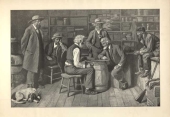The Checker Maven
The World's Most Widely Read Checkers and Draughts Publication
Bob Newell, Editor-in-Chief
Published every Saturday morning in Honolulu, Hawai`i
Noticing missing images? An explanation is here.
Spectacular Finale

A spectacular finale: It's the goal of many a concert, show, or special event, and it sends everyone home just as pleased as might be, often with an unforgettable memory.
Does checkers offer the same level of excitement? Certainly! Today we bring you a problem that will make you sit up in your seat.
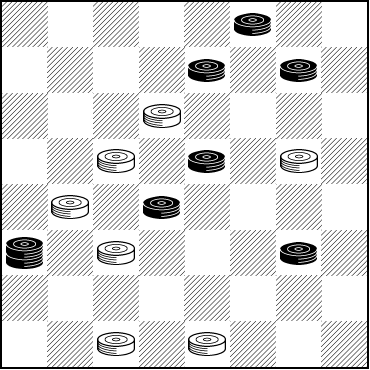
WHITE
White to Play and Win
W:W31,30,22,17,16,14,10:B24,K21,18,15,8,7,3.
This is a stroke problem that is supposed to an "easy" one, but we have our doubts about that unless your powers of visualization are very well developed. We'd call it at least "medium" in difficulty, but as a pleaser, it surely rates way up there.
Stroke problems may not be practical, but they are great fun, and they develop our ability to look ahead. Give this one a try and see if you aren't just a little taken in by the spectacular conclusion. As always, clicking on Read More will show you the winning moves.![]()
Medium Problem
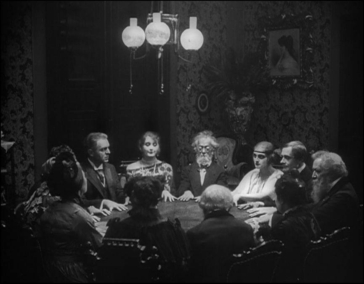
No, we don't mean that kind of "medium" and we don't expect you to divine the solution to today's checker problem; rather, we consider it "medium" in difficulty. It's a nice setting sent to us by Toronto's intrepid checkerists, Lloyd and Josh Gordon.
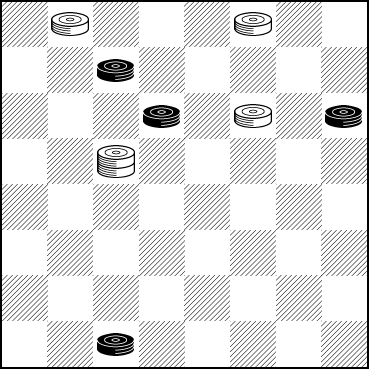
BLACK
Black to Play and Draw
B:W32,30,22,K19:B27,23,21,3.
The stars tell us you'll be able to solve this one, as long as you keep your thinking channels open. It won't take a seance, though, to check your solution; all you need do is wave your mouse on Read More to see how it's done.![]()
Hard Fall Problem

The first day of fall is just a few days away at the time this column will be published, and it's time to get serious. All the students are back in school and all regular activities have likely resumed by now. With cold weather ahead, it's time to sharpen your checker skills to prepare for the busy checker season ahead.
Of course, The Checker Maven is always willing to help, so we've got a problem today that's somewhat tougher than last week's entry.
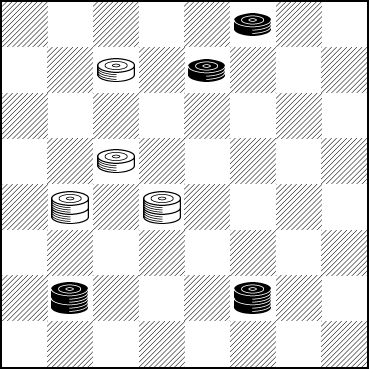
WHITE
White to Play and Win
:WK18,K17,14,6:BK27,K25,7,3.
Will you solve it or fall down on this one? You should be able to solve it, but you can always let your mouse fall on Read More to see the solution.![]()
Easy Summer's End Problem
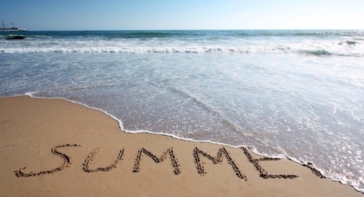
Fall in the Northern Hemisphere is not far off, and if you live in a so-called "temperate" climate zone, you're probably out enjoying the last of the warm weather. So today, we won't keep you from your outdoor pursuits for long; our problem definitely falls into the "easy" category, and you'll solve it in short order. The position was provided by regular contributors Josh and Lloyd Gordon of Toronto.
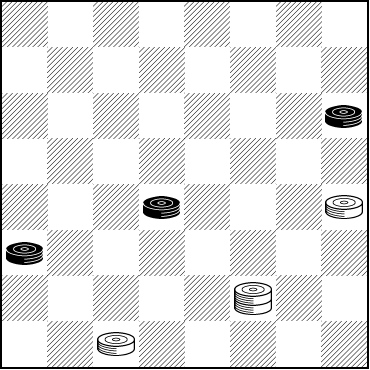
WHITE
White to Play and Win
W:W30,K27,20:B21,18,12.
You've probably already solved it, but just in case, ease your mouse on to Read More to easily check your solution.![]()
Labor Day 2017
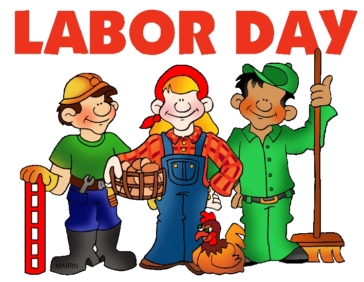
On every Labor Day holiday, we pay tribute to the common man and woman. Yes, we've said it before, but it's worth saying again: These are the people who, through honest hard work, make our nation what it is. Whatever you do, be proud of it and celebrate your contribution. We believe that all occupations are honorable, and that the farmer in the field and the laborer on the construction site can take pride of place right alongside the business executive and the real estate tycoon. We all have our job to do, and all of it is important.
Checkers is a great equalizer. Great players have come from humble origins. Over the board, it makes no difference if you're rich or poor, famous or unknown; only your skill and ability count for anything.
We don't know what your life's calling may be, but if you're here, you must be a checker fan, and today, as we recognize Labor Day together, we hope we've got something pleasing for you. Naturally, we've turned to that great problemist and American patriot, Tom Wiswell, with a composition he called "The Pocket."
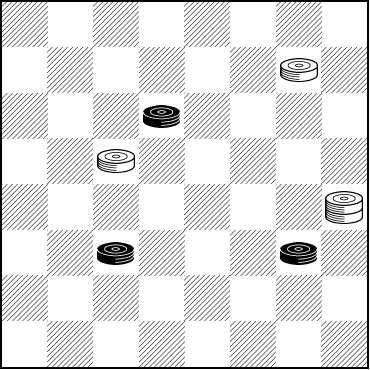
BLACK
Black to Play and Draw
B:W25,19,K13:B23,11,9.
This is a very practical problem, showing a way to get a draw when things look rather difficult. Would you be able to find the draw over the board? Labor away at it--- checkers is an honorable pursuit if there ever was one--- and then work your mouse over to Read More to see the solution.![]()
Complex Interchange
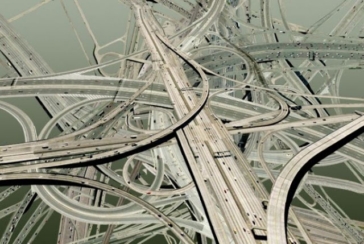
Does the word "interchange" call to mind the kind of hopelessly complicated tangle of roadways depicted above? We're not sure if this photo is real or satire, but please remind us to seek an alternative route.
In checkers, "interchange" can have different meanings, the most common ones probably referring to an exchange of pieces or an exchange of positions.
Today, we'll present a study that takes the idea to its ultimate conclusion. This is not a typical checker problem, but it has a great deal of didactic value. The exact origin of this problem is unknown, but it's been around for a while.
The problem is to go from the start position
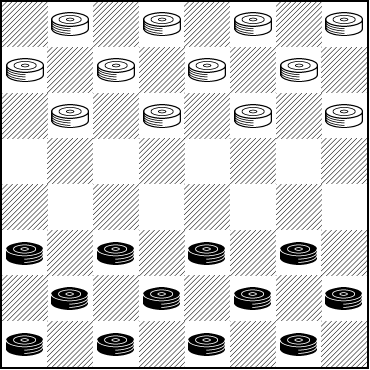
BLACK
Starting Position
B:W32,31,30,29,28,27,26,25,24,23,22,21:B12,11,10,9,8,7,6,5,4,3,2,1.
to the following fully interchanged position.
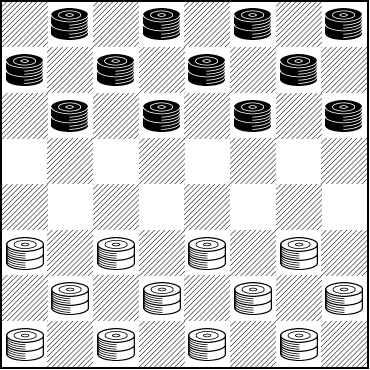
BLACK
Ending Position
B:WK12,K11,K10,K9,K8,K7,K6,K5,K4,K3,K2,K1:BK32,K31,K30,K29,K28,K27,K26,K25,K24,K23,K22,K21.
Of course, this has to be done completely with legal moves (e.g., all forced captures will have to be avoided).
Now, we won't say it's easy or short (it's neither), but a methodical, thoughtful approach will yield results. This is a great exercise in planning and visualizing, and we believe it will aid in the development of over-the-board skills. And in the process, you'll certainly learn something about mobility, traffic jams, and clearing a path.
Can you untangle this one, or will you loop around in your quest for a solution? It's worth your time and effort, but when you want to get out of the traffic, just click on Read More to see an animated solution.![]()
Nice and Neat

Shown above is a hotel room that is quite attractive because it's nice and neat, giving it plenty of appeal. At least based on the photo, you'd most likely be quite willing to stay there for business or vacation.
Checker problems can be nice and neat, too, with solutions that appeal and settings that draw you in. We think the problem below meets these criteria.
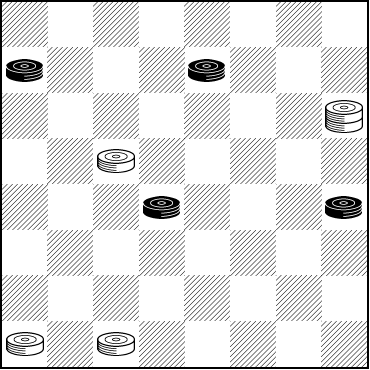
WHITE
White to Play and Win
W:W30,29,14,K12:B20,18,7,5.
This problem is "nice" in that it has a very flashy solution which is reasonably well concealed. And the problem is "neat" in that the author's intended solution can be avoided, yet there is still a solid win which demonstrates practical technique.
Are you nice, or neat, or nice and neat? Don't be mean and don't mess it up! Solve the problem and click on Read More to see the solutions.![]()
Hard Problem
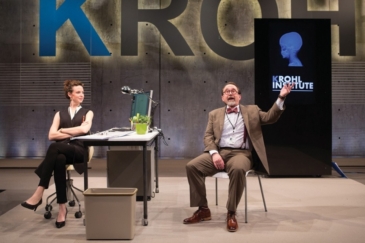
Hard Problem is actually the title of a play by Tom Stoppard that ran at the Scena Theatre in Washington, D.C., early this year. While the "problem" is about consciousness, not checkers, by all accounts it was a good show.
We hope we have a good show for you today as well, with a "hard problem" about checkers. Let's jump right in.
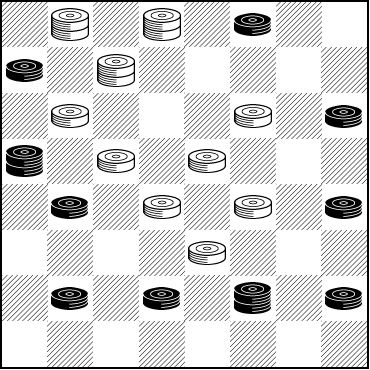
WHITE
White to Play and Win
W:W23,19,18,15,14,11,9,K6,K2,K1:B28,K27,26,25,20,17,K13,12,5,3.
You'll need to maintain a high degree of consciousness to solve this one, and, regardless of possible metaphysical implications, you'll have to focus and apply solid over the board visualization skills. Try to solve it without moving the pieces; that will definitely be a mind-expanding experience. Then, when you're done, make a conscious decision to click on Read More to see the solution.![]()
An Easy Problem
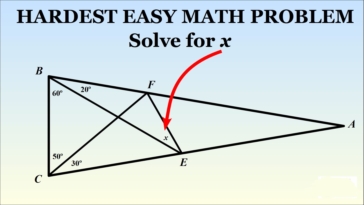
How good are you at geometry? Does the problem above look easy to you? To us, it looked easy in principle, and we didn't need more than a minute or two to come up with a set of equations to represent the relationships in the diagram. Then we went to solve the equations for the desired variable 'x'. That too was just the work of a couple of minutes ... until we ran into what we'll call "a little snag."
Hopefully today's checker problem will be the work of a few seconds (not even minutes), just a brief summer interlude, with no hidden snag. Let's have a look.
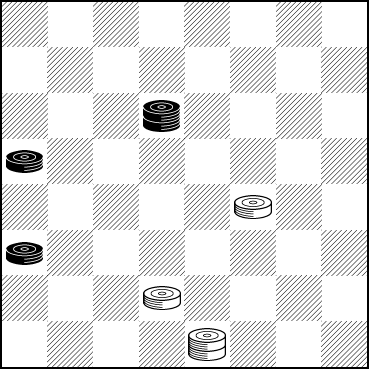
WHITE
White to Play and Win
W:WK31,26,19:B21,13,K10.
You've probably already solved it, but we'll extend an extra incentive to click on Read More: We'll also give the answer to the math problem.![]()
4th of July: America United
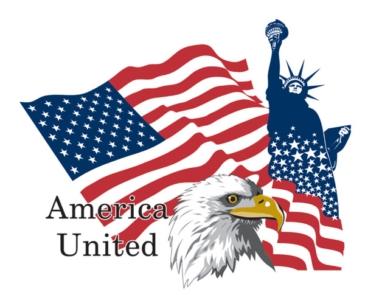
It's not often that The Checker Maven presents a political message or takes a political stand, but as we prepare to celebrate the birthday of our great nation on our wonderful 4th of July holiday, we can't help but wish for unity among us.
In our Republic, Americans are free to differ and indeed we celebrate our differences. But the kind of divisiveness we've seen over the past year or so is good for no one. Why can't we agree to disagree about some things, but still unite for the sake of our nation?
The 4th of July is an appropriate time to reflect on the fact that we are one nation and one people, e pluribus unum, from the many--- one. Let's work together for the good of us all.
And for our checker problem today, we've simply got to turn to Tom Wiswell, that great problemist and great American patriot.
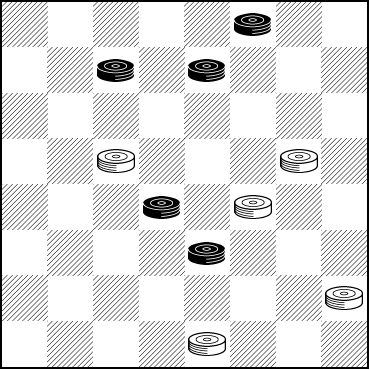
WHITE
White to Play and Draw
W:W31,28,19,16,14:B23,18,7,6,3.
Can checkers be a great unifying factor? Why not? Try out this problem and then click on Read More to see how to do it. The solution is one worthy of a master; maybe you might enjoy getting together with your checker friends--- regardless of anyone's political views--- to work it out.![]()
The Checker Maven is produced at editorial offices in Honolulu, Hawai`i, as a completely non-commercial public service from which no income is obtained or sought. Original material is Copyright © 2004-2025 Avi Gobbler Publishing. Other material is public domain, AI generated, as attributed, or licensed under CC1, CC2,CC3 or CC4. Information presented on this site is offered as-is, at no cost, and bears no express or implied warranty as to accuracy or usability. You agree that you use such information entirely at your own risk. No liabilities of any kind under any legal theory whatsoever are accepted. The Checker Maven is dedicated to the memory of Mr. Bob Newell, Sr.

